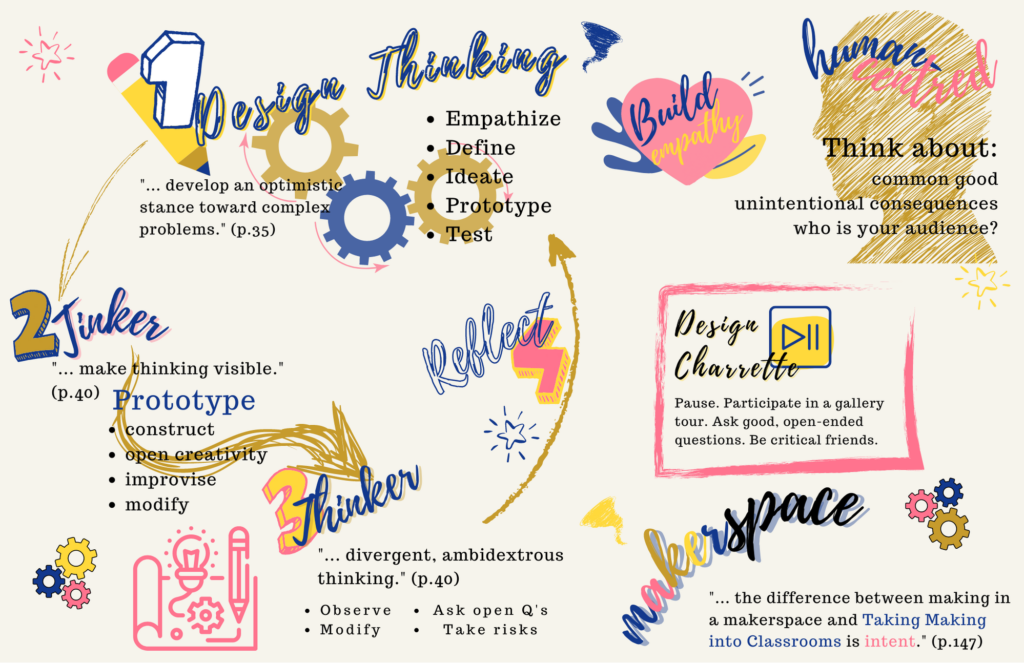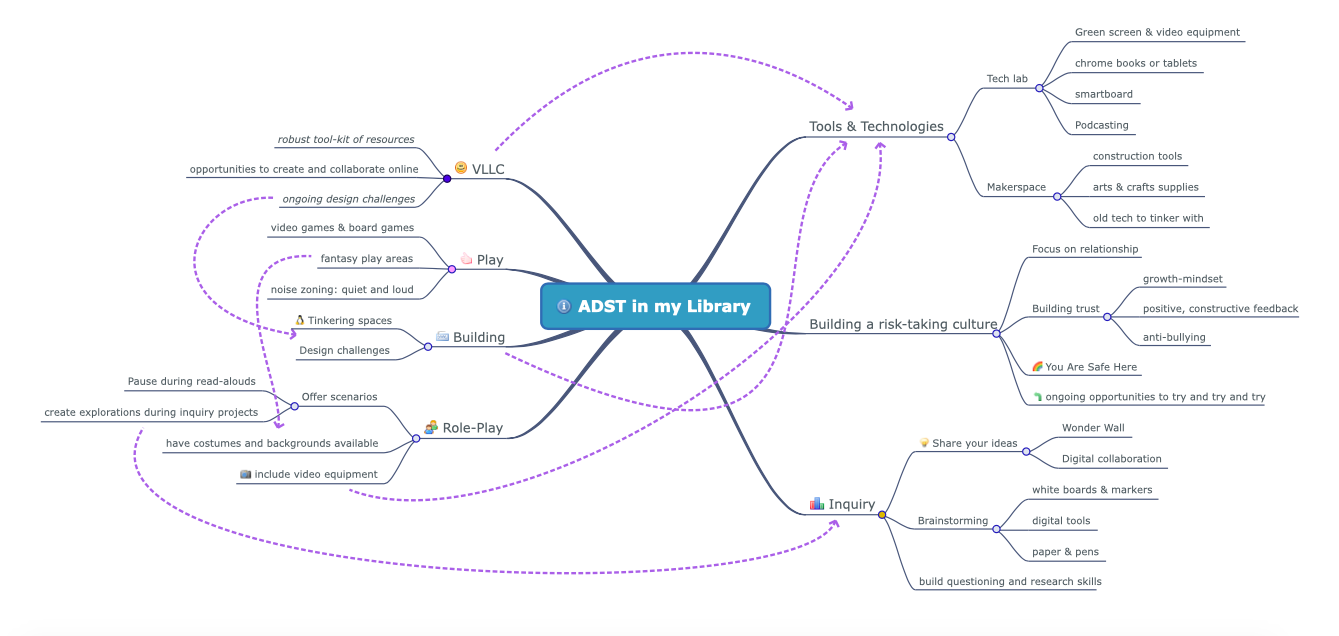
References:
Taking Making Into Classrooms: A Toolkit for Fostering Curiosity and Imagination
Canva for Educators (sign in using your district email to unlock free features!)
Place-based teaching and learning in SD61

References:
Taking Making Into Classrooms: A Toolkit for Fostering Curiosity and Imagination
Canva for Educators (sign in using your district email to unlock free features!)

How can I support ADST in my library?
Most importantly, I want to foster an environment of trust, so that all stakeholders feel safe to take risks. With trust can come play, and with play comes creativity (Tim Brown, TED).
Next up, I want to encourage stakeholders to play by giving them the tools to do so. From makerspaces to tech hubs to role-playing, lego, and board games/video games. I want the LLC (and the VLLC) to be a space where people know they are free to ideate, prototype, test, fail, try again.
Lastly, I want inquiry to be woven into every aspect of the library. From a Wonder Wall, where big and little questions are frequently refreshed, to actively and explicitly building research skills. The library should be a space where searching for knowledge is supported in every way.
Is there anything missing from this MindMap?
If you could incorporate one new thing into your LLC or VLLC tomorrow to help promote ADST, what would it be?
References:
Brown, Tim. 2008. Tales of creativity and play. Serious Play 2008. https://www.ted.com/talks/tim_brown_tales_of_creativity_and_play

Questions for you:
Get the link to this Canva Infographic here. You may use this as a template and edit to suit your personal learning goals!
Ok, let’s take a look at some of the leading PLN community platforms:
So, it would seem as if ISTE has the most dedicated PLN platform. I wish I could dig through the discussion boards before having to pay the fee, so that I could see what topics have been covered. At the end of the day, I’m honestly most likely to start (and join) a focused PLN through Facebook, Instagram, Twitter, and Pinterest. That’s where I’m most active, where I’m comfortable, and where I know I can find the specific topics I’m looking for (for free) without barriers to access.
A common concern I hear is that of teacher-librarians wishing to make virtual library learning commons (VLLC) spaces more accessible to students from low socioeconomic backgrounds, who may not have access to devices outside of school.
Would a focused PLN be helpful to target this accessibility issue? One focused on collaborative advocacy, advice on how to improve accessibility, and tips from folks who have made positive changes in their schools?
If I were to create this PLN, I’d start with these three steps:
© 2025 Learning in Place
Theme by Anders Noren — Up ↑
Recent Comments